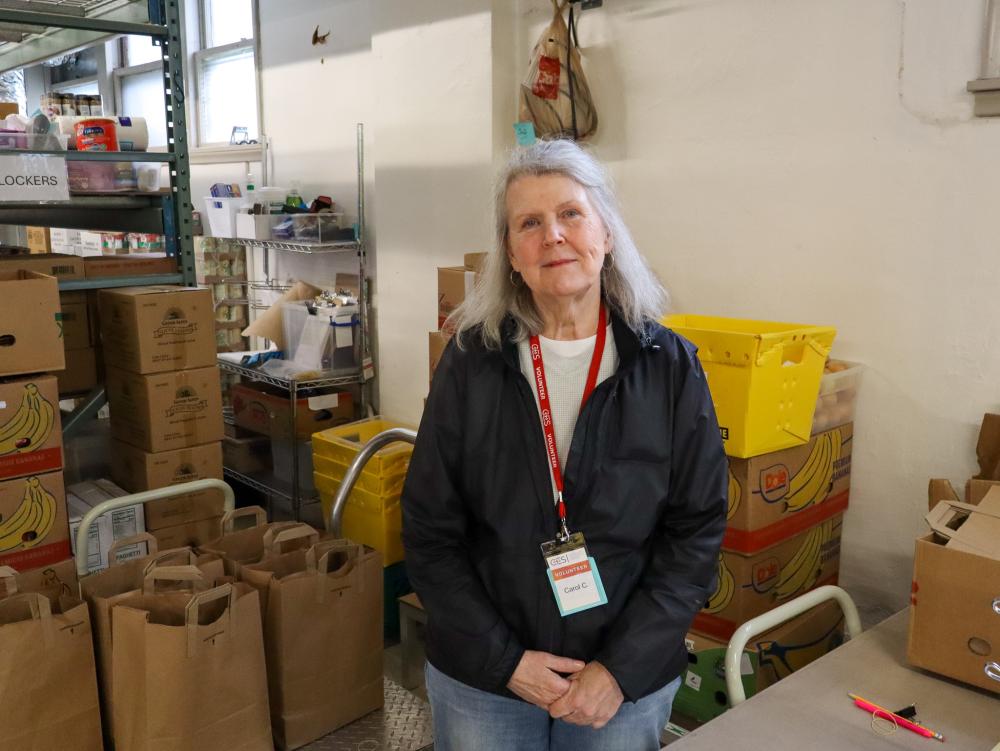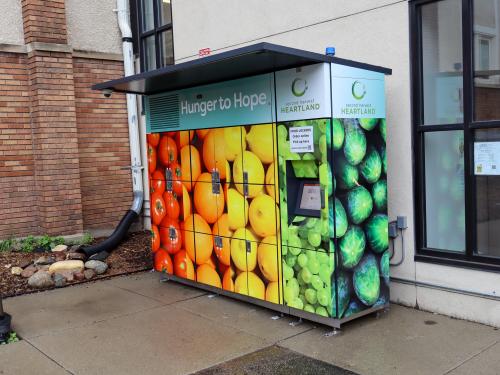
Food Lockers at the CES Food Shelf Provide Grocery Pickup Alternatives for Neighbors
“I like to be behind the scenes.”
Carol has been volunteering with Community Emergency Service’s (CES’s ) Food Market in Minneapolis for over a year. During that time, she has taken on a multitude of different roles at the Second Harvest Heartland partner nonprofit, but she finds herself gravitating to the more logistic side of things.
“If a guest says to me that we don’t have any soy sauce, or something like that, I can go ask Carol,” says Andy, another volunteer at CES’s Food Market. “She knows if we have it—she has a grasp on our thousands of products.”
One of Carol’s main roles is stocking CES’s food lockers. The bright and colorful food lockers are located outside of CES’s building and offer a flexible, private, and contact-free option for picking up groceries. Neighbors can access the lockers day or night by reserving their order in advance. Neighbors order groceries for their household using an online order form, scheduling a convenient pickup time, and heading to CES at that time. They receive a personal code that they use to unlock their locker and pick up their groceries.
One of the great features of the food lockers is a language screen—neighbors choose their language and it communicates to them in the language of their choice; a valuable resource as the demographics and different languages used in CES’s service area continue to shift.
“We’ve recognized the need keeps growing and growing,” says Jamie Dolynchuk, president of CES. “We use the term ‘dignified’ but what does that mean? It’s the food that is served, but it’s not just that. I don’t think there’s anything dignified about having moms wait outside for five hours or having to pull their kids out of school to get groceries. These food lockers are a great example of treating the whole person and are a great model for everybody.”

To use the lockers, neighbors place their order online and volunteers stock the refrigerated lockers. Then, neighbors stop by to pick up their items at their convenience.
Jamie notes that the ease of use of the food lockers has caused them to grow in popularity, serving not only the Ventura Village community, but students from the nearby University of Minnesota. “Some people, like students for example—they need privacy, they need quickness, and the ability to access their food 24/7.”
Jamie is excited, not only about serving neighbors, but about making further connections to the neighbors they serve. “One of the other powerful things is that we now have data—we have phone numbers of anyone who has registered for the lockers. We can continue to do outreach. We can say we’re having a community meal, or that there’s a Vikings Family Day coming up.”
The bags in the climate-controlled lockers are stocked with both non-perishable and fresh food items. “Our goal is to make it so anyone can make a meal out of what they get from the lockers,” says Carol.
There are also opportunities for neighbors to communicate with CES through the website. “We initially thought we would get requests for different types of food, like hot sauce, or more or less of some items,” says Carol. “But we also get things like ‘I don’t have a car,’ which means that I know to not put too many heavy items in their locker or give them some extra bags to make it easier for them to carry.”
Jamie is excited about the potential of using food lockers not just at CES but across the city to help meet the rising needs of the community. “I’d love to see food lockers everywhere: universities, community colleges, churches, grocery stores. Let’s put lockers strategically in the most food insecure neighborhoods and give people access to the food they need.”
